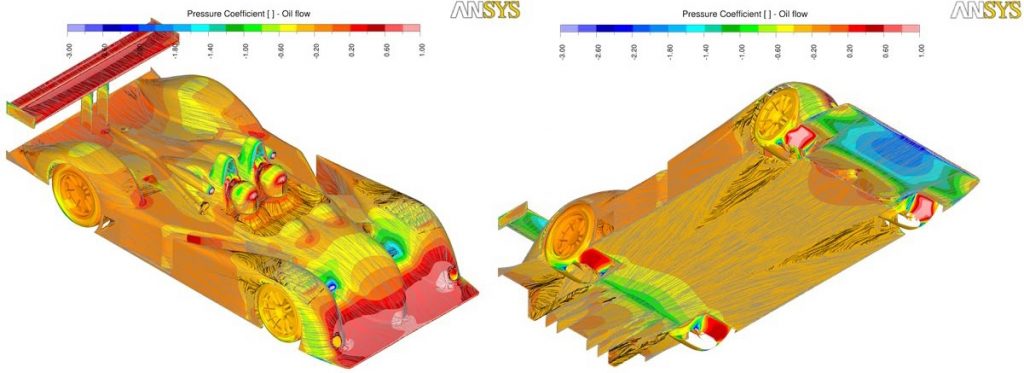
A joint study with Dallara about the flutter analysis of the front wing splitter mounted on the 2001 Le Mans Prototype car has been published on the Italian journal “Analisi e Calcolo” n° 94 September 2019.
In the analysis and design of racing competition cars, numerical tools allow to investigate a wide range of solutions in short time and with high confidence in results. The great available computational power permits to combine simulation software so that different physics involved can be tackled at the same time. An important class of multi-physics simulations for motor sport addresses the fluid-structure interactions happening between the aerodynamic components of the car and the surrounding flow: this interaction can induce structural deformations and vibrations which, in turn, can influence the surrounding fluxes.
The study was set up adopting high fidelity CAE models: a 400k shell elements FEM represents the full front wing assembly including the mounting frame, a 240M cells CFD represents the full car immersed in a box shaped wind tunnel. FEM extracted structural modal shapes are mapped onto the CFD mesh adopting Radial Basis Functions (RBF) mesh morphing so that the surfaces of the CFD model can be deformed according to retained modes. Such deformation is then propagated so that the volume mesh is adapted accordingly.
The elastic CFD model with modes embedded was then loaded by applying a transient signal individually to each retained mode with a smoothed step function. A Reduced Order Model (ROM) for the aerodynamics of the coupled system was then extracted combining the results of the individual transient run. The critical speed experimentally observed to be in the operating range of the car was captured by the model quite well. The same workflow was then adopted to investigate a different design in which a stiffener has been introduced to increase the first mode natural frequency from 40Hz to 49.4Hz. Flutter speed was increased and moved outside the vehicle range. The car equipped with the improved part proved to perform on the track without previously detected instabilities.

The article can be download in the Journal Papers section.



